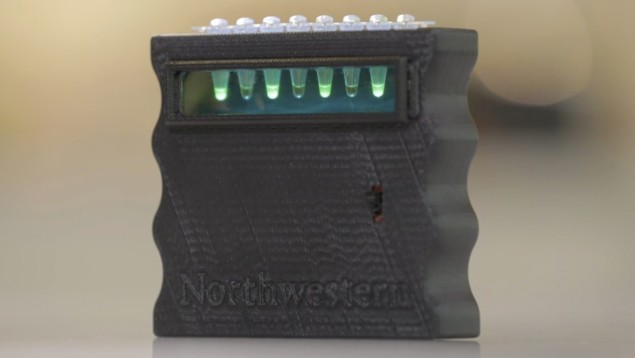
With 80% of the world’s population at risk of water insecurity, there’s a clear need for a fast, simple and reliable way to test water for a wide range of contaminants. Julius Lucks and his team at Northwestern University believe they have the answer. Its name is ROSALIND – RNA output sensors activated by ligand induction.
In their recent study, published in Nature Biotechnology, Lucks and his team didn’t invent a sophisticated new technique. Instead, they took advantage of the elegant solutions that have evolved in nature to “taste” the water’s contents. This approach provides a straightforward positive or negative test for up to 17 different water contaminants, and it works in minutes.
Putting nature to a new use
The researchers’ approach is to take molecular machinery (including DNA, RNA and proteins) and reprogramme it for their own needs. In this case, the machinery comes from bacterial cells and uses the components that normally copy the DNA’s genetic code into a messenger form to be turned into the cell’s building blocks. Instead, the team re-engineered these molecular machines to work outside the cell for a new purpose.
Usually, DNA is copied when the code is needed by the cell. For this testing platform, that control is instead used to trigger DNA copying only when specific water contaminants are present. The water samples being tested are mixed in a tube pre-loaded with these molecular machines. When contaminants are present, the machines copy out a messenger form that lights up in the tube – giving off a signal that’s easily seen by the human eye. This allows ROSALIND to turn a contaminant we could never see into a light signal we can’t miss.
Importantly, the acronym ROSALIND also honours Rosalind Franklin, whose work was vital to the discovery of the DNA double-helix structure. According to Lucks, “her work essentially eventually enabled us to learn how to reprogram DNA to act in our technology”. Franklin’s 100th birthday would have been the same month that this research was published, he notes.
Taking technology where it is needed
Whilst current methods to test water require significant expertise and equipment – making them expensive – ROSALIND is different, according to Lucks. “We’re offering a technology that enables anyone to directly test their own water and know if they have contamination within minutes,” he explains. “It’s so simple to use that we can put it into the hands of the people who need it most.” The researchers have tested their method in the field, where it successfully matched the results of a gold standard laboratory test – flame atomic absorption spectroscopy – whilst being much quicker and more affordable.
Putting the technology into people’s hands doesn’t just mean making it cheaper, but also making it easier to use. Using the molecular machines outside of the cell allows them to be freeze dried, which keeps all of the components stable until they are needed. All the user needs to do is add a drop of water. Not only is this process simple, but the whole system is highly flexible. Currently, 17 different contaminants can be detected – including toxic metals, antibiotics and additives to personal care products – and ROSALIND could be easily updated to add more relevant contaminants in future.
Having previously tried to test water in his own home, Lucks was frustrated to find it a difficult or impossible task. “To ensure access to safe and clean drinking water, we need technologies that will allow easy monitoring of water quality,” he says. As the researchers move from creating their concept in the lab to developing this platform via a start-up company, Stemloop, Lucks is hoping that ROSALIND will soon bring water testing technology to the masses.



